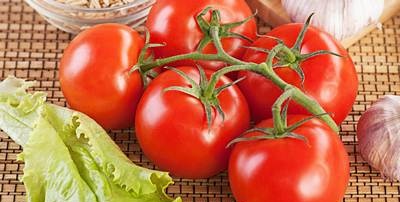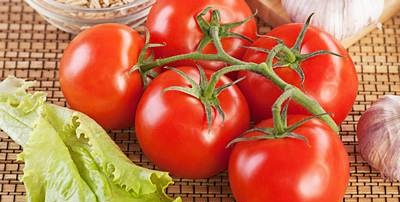|
 Vegetables play an important role in human nutrition. Vegetables contain carbohydrates, mineral salts, organic acids and vitamins and have excellent taste and aroma. In addition, vegetables increase appetite and promote better absorption of other foods. The predominant component of vegetables is water. Vegetables play an important role in human nutrition. Vegetables contain carbohydrates, mineral salts, organic acids and vitamins and have excellent taste and aroma. In addition, vegetables increase appetite and promote better absorption of other foods. The predominant component of vegetables is water.
Vegetables contain 70 to 95% water. High humidity is one of the reasons for rapid deterioration when stored in unfavorable conditions.
Carbohydrates vegetables are represented by sugars, starch and fiber. Many vegetables are given a sweet taste by sucrose, glucose and fructose.
Starch is found in large quantities in potato tubers (up to 25%). It is also found in green peas. The rest of the vegetables contain only unripe starch and very little.
Protein are found in vegetables in relatively small quantities. Legumes, nuts, cabbage and spinach vegetables contain more protein.
Fat in vegetables there is almost no (ns less than 0.5%). Only kernels contain up to 60% fat.
Of mineral substancesincluded in the composition of vegetables, calcium and iron salts, the most important for the human body, are of particular importance.
Fresh vegetables contain vitamins C, group B, PP. The richest in vitamin C are white cabbage, potatoes, red pepper, parsley, dill.
Vegetables are classified according to commodity characteristics:
- tubers: potatoes, sweet potatoes (sweet potatoes), Jerusalem artichoke (earthen pear);
- cabbage: white cabbage, red cabbage, cauliflower, Savoy, Brussels sprouts, kohlrabi;
- root crops: beets, carrots, parsley, parsnips, celery, turnips, radishes, radishes, horseradish;
- onions: onions, garlic;
 - fruit vegetables: tomatoes, eggplants, peppers, cucumbers, zucchini, pumpkin; - fruit vegetables: tomatoes, eggplants, peppers, cucumbers, zucchini, pumpkin;
- leafy: spinach, sorrel, lettuce, onions (feathers), batun onions;
- spicy: dill, tarragon;
- legumes: peas, beans, beans (in pods);
- dessert: asparagus, rhubarb, artichokes.
Tuber crops. These include plants in which tubers are formed on underground shoots. The most common representative of tubers is potatoes.
All potato varieties are divided according to their purpose into canteens, technical and universal.
Table potatoes include varieties that are distinguished by good taste, easy digestibility and a thin, firm, but easily peelable skin with shallow eyes. The following varieties of table potatoes are most common: Priskulsky early, Epikur, Early rose, Courier, Lorkh, Yubileiny, Smyslovsky, Yubel.
According to the ripening period, potatoes are divided into three groups:
- early varieties - Early rose, Oktyabrenok, Epron, Priekulsky early. They ripen in the middle lane
countries in June and Do not differ in storage stability, therefore they are not recommended for long-term storage;
- medium varieties - Lorkh, Korenevsky, Berlichingen, etc. These varieties are characterized by high resistance during winter storage;
- late varieties are the most stable in storage.
Cabbage vegetables - white cabbage, cauliflower, red cabbage, Savoy, Brussels and kohlrabi.
White cabbage... This cabbage contains carbohydrates, nitrogenous and minerals, vitamins.
The edible part of white cabbage is the head of cabbage, which consists of stump and leaves. The main part of the head of cabbage is the leaves that are tightly adjacent to each other and are used for food.
Standard cabbage heads should be fresh, clean, well-formed, firm or less dense, but not loose.
During storage White cabbage affected by white and gray mold: white or gray mold appears on the leaves. As a result of long-term storage at low temperatures (below -1 ... -4 ° C) and poor ventilation, cabbage develops punctate necrosis (many small dark specks appear on the leaves).
Cauliflower... In terms of nutrient content, it is one of the most valuable types of cabbage vegetables. It is rich in proteins (2.5%), minerals, vitamins C and PP.
Unblown inflorescences in the form of white heads are used for food.
Bacteriosis is a common cauliflower disease. With this disease, dark brown spots appear on the heads.
Red cabbage... It has red-purple leaves. In terms of nutritional value and vitamin content, it surpasses white cabbage.
Savoy cabbage... This cabbage has bubbly (corrugated) green leaves that are loosely adjacent to one another, so the heads of cabbage are loose. It contains more protein and vitamin C than white cabbage. It is used for making soups and side dishes.
Brussels sprouts... This cabbage is sometimes called kocheshkovy. Greenish, the size of a large walnut, are used for food, which form on a high stem. Cabbage has a delicate taste, high protein content (up to 5%) and vitamin C (4 times more than white cabbage). It is used for the preparation of soups, side dishes in boiled and stewed forms, as well as pickled and canned.
Kohlrabi... Kohlrabi is a stem-bearing cabbage. Kohlrabi contains more nutrients than white cabbage, and vitamin C is as much as lemon and orange fruits.
Root vegetables are vegetable plants in which thickened taproots are the edible portions.
Beet... It contains a lot of sugars (up to 10%), as well as nitrogenous and mineral substances, vitamin C. Medium-sized beets are more appreciated, since its pulp is softer and less annular. By form beet is flat-rounded, round and elongated-conical.
Carrot... It is a valuable food product, as it contains carotene and sugar, nitrogenous substances, mineral salts, vitamins C and B. The color of table carrots is predominantly orange, the pulp is juicy, the core is thin. Table varieties of carrots are subdivided by root length into short (carotels), semi-long and long, and by ripening rate - into early, mid-ripening and late-ripening.
During storage, carrots are most often affected by white, gray and black rot.
Radish... This is the earliest ripening vegetable plant. This root vegetable is prized as a flavoring product and a source of vitamin C.
Radish... Radish roots contain sugar, nitrogenous and mineral substances, vitamins C and Bt and essential oils, which give it a sharp, bitter taste and a specific smell.
Swede... The root vegetables of the swede are spherical or slightly flattened, white or yellow, contain sugar (4-5%), vitamin C and other substances. They use rutabagas fresh, boiled and fried.
Turnip... Turnip roots have a round-flat shape with a concave bottom, yellow or white. The pulp of the root vegetable is juicy, contains up to 6% sugar, vitamin C and other substances. They eat turnips fresh, boiled and baked.
Parsley... Parsley is grown in two types - leaf and root. Do not use root parsley
only a root vegetable, but also leaves. Parsley roots contain essential oils, and the leaves are rich in vitamin C.
Celery... Celery is grown in three varieties - root, petiole and leaf.
Root celery is most prized. Rounded and rounded-flattened roots with a spicy taste.
Root and leaf celery are used as a seasoning in cooking, and petiolus is used for salads.
Garlic... It is a complex bulb made up of individual small bulbs (cloves). The teeth are covered with thin scales, and weight together with a common white or pink thin shirt.Garlic has a pungent taste and aroma due to its aromatic content.
Dill... Green leaves and stems of a plant of the umbrella family. It is used as a spice for salting vegetables, for canning, as a seasoning. Has a pleasant aroma.
Tomatoes... Depending on the variety and ripeness, tomatoes are red, pink, brown and green and of various shapes.
The content of sugar, vitamins A, B and C, iron salts and the high taste of tomatoes have led to their wide distribution. The good taste of tomatoes is due to the good combination of sugar and organic acids.
The fruits are composed of the skin, fruit pulp and seed chambers. Depending on the variety, the fruits are small-chambered and multi-chambered. As a rule, multi-chambered fruits are ribbed, they are worse preserved. Tomatoes are used for food fresh and salted, and are also used for the preparation of canned food: tomato paste, tomato puree, juices, etc.
Eggplant... According to the structure of the fruit, eggplants are divided into pear-shaped and spherical. The color is from light purple to dark purple.
The nutritional value of eggplant is low, but it tastes good. They are used for making canned food, stuffing and frying.
Sweet pepper... Harvested unripe (green or white). Bell peppers have a fleshy fruit and are used in natural and stuffed canning and cooking.
Pepper fruits contain sugar, proteins, a lot of vitamin C and carotene. Ripe red peppers contain as much vitamin C as black currants.
Cucumbers by size they are divided into short, shortened and semi-long; by the time of ripening - early, middle and late.
The nutritional value and calorie content of cucumbers is low. They contain 95% water. Cucumbers are appreciated as a flavoring product. They promote metabolism for better assimilation of food. Fresh and canned cucumbers are used.
Zucchini belong to fruit vegetables, they have a cylindrical shape. For cooking, courgettes are harvested green when they have a soft rind and juicy flesh.
Coca's textbook (edited by S.M. Timokhov), 1982
|